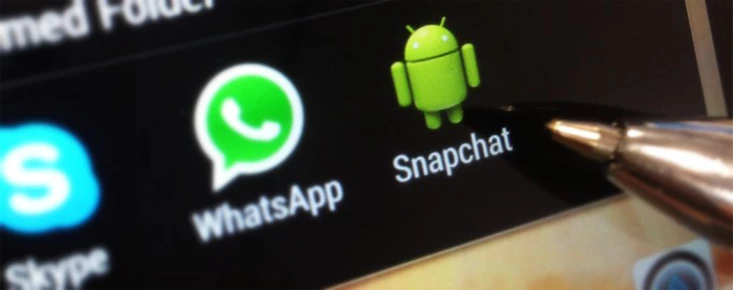
Partner Article
How Snapchat has changed the future
Karl Lagerfeld is probably very upset.
The German fashion designer once stated, “What I like about photographs is that they capture a moment that’s gone forever; impossible to reproduce.”
Well, Snapchat, as we all know, captures a moment for a moment (or ten), and then both are gone forever. In the process, the Android and iOS app has turned the very meaning of photography on its head: taking photographs for the purpose of posterity and remembrance, and instead using them to convey a fleeting, momentary message.
And what’s most startling, quite possibly, is that we didn’t notice how one of the multimedia staples of the last two hundred years has been completely changed in less than two.
In less than two years, and despite having only five staff, Snapchat has gone from initial release to being valued at a staggering $860M and has received significant investment in 2013. Despite the vast majority of its user base being located in the United States, it has infiltrated the lexicon of Great Britain, and seems to have overcome initial fears that it would be used solely for untoward purposes.
But the undeniable and exciting success of Snapchat has hidden another story: what does this new method of communication hold for the future? The ability to get a user to examine every detail of a picture in less than ten seconds, and commit it to memory long enough to draft a reply, is something out of an advertiser’s dream. And whilst Snapchatremains ad-free, for now, one has to question from where the inevitable monetization of the app will come.
Snapchat have admitted to playing around with in-app purchases. The truth is that that’s not where the large Facebook-style revenue of which Snapchat dreams lies, nor is its value derived from this potential revenue stream. For Snapchat to earn the amount of money it dreams and is capable of, it would have to introduce location tracking, integration with Facebook and Twitter, and then have advertisements targeting a colossal user base based upon their individual geographic location. With the right investment, it wouldn’t surprise me if brand/location recognition algorithms were loading into the app, and each snap taken scanned for recognised brand logos, with targeted advertising following.
Balancing the obtrusiveness of these ads with the usefulness of the app will be the challenge. As a Snapchat user myself, I find it useful and amusing, but I’m pretty confident that if it started scanning my photos, or storing my information, or even just showing me an obtrusive ad, I’d drop it fairly quickly.
Snapchat does hold some important lessons for the future. A modicum of an original idea and digital technology is enough to set the wheels in motion, and generate interest, excitement and revenue. It has redefined how we consider photography in a very small space of time, using the images as a form of communication as opposed to an art form. Often in technological circles we wonder what the next big invention is, but Snapchatleaves us with a different question: what is next to be redefined?
More even than that, however, it holds clues as to the direction in which advertising is heading. Imagine taking a photograph of the New York skyline on your old Kodakcamera, printing it out, and sending it to a friend. When it arrives, it has adverts for New York holiday packages splattered across the top of it.
Advertising is becoming more infiltrative, more clever. I await Snapchat’s monetization with a simultaneous sense of excitement and disappointment. Excited to see what innovative step they may take next, disappointment in the sense that I cannot foresee a move in which more personal information and personal creativity is translated into big bucks for someone else.
We live in interesting times.
This was posted in Bdaily's Members' News section by Digitia .








 A year of resilience, growth and collaboration
A year of resilience, growth and collaboration
 Apprenticeships: Lower standards risk safety
Apprenticeships: Lower standards risk safety
 Keeping it reel: Creating video in an authenticity era
Keeping it reel: Creating video in an authenticity era
 Budget: Creating a more vibrant market economy
Budget: Creating a more vibrant market economy
 Celebrating excellence and community support
Celebrating excellence and community support
 The value of nurturing homegrown innovation
The value of nurturing homegrown innovation
 A dynamic, fair and innovative economy
A dynamic, fair and innovative economy
 Navigating the property investment market
Navigating the property investment market
 Have stock markets peaked? Tune out the noise
Have stock markets peaked? Tune out the noise
 Will the Employment Rights Bill cost too much?
Will the Employment Rights Bill cost too much?
 A game-changing move for digital-first innovators
A game-changing move for digital-first innovators
 Confidence the missing ingredient for growth
Confidence the missing ingredient for growth